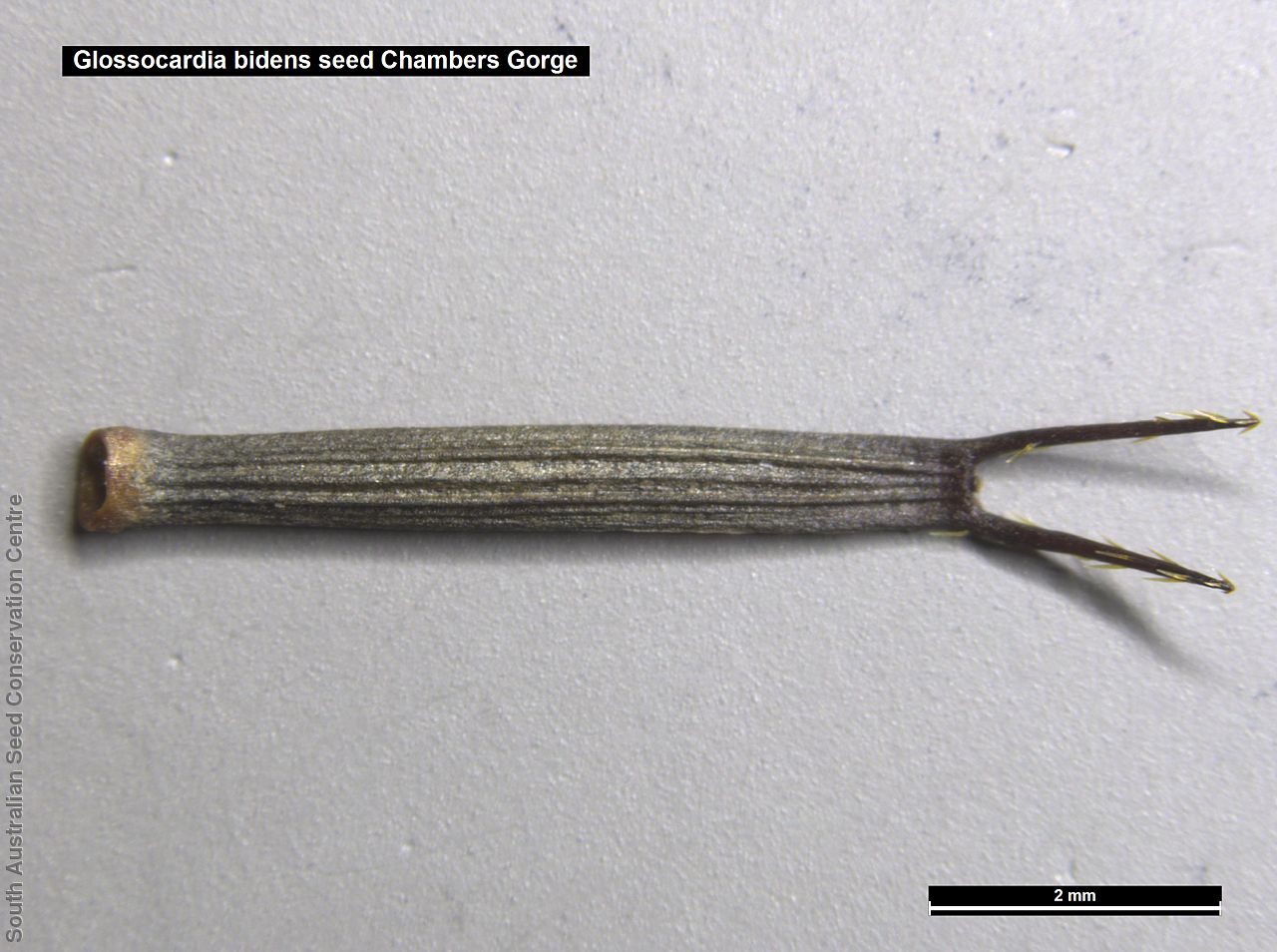















Botanical art
Prior names
Glossogyne tenuifolia
Zinnia bidens
Bidens tenuifolia
Glossogyne tenuifolia, nom.inval.
Coreopsis tannensis
Glossogyne tannensis
Etymology
Glossocardia from the Greek 'glosso' meaning tongue and 'kardia' meaning heart, alluding to the shape of the style. Bidens from the Latin 'bis' meaning twice and 'dens' meaning tooth, referring to the to the bristles on the achenes.
Distribution and status
Found in northern South Australia growing in a wide range of habitats. Also found in all mainland States. Native. Common in South Australia. Rare in Victoria. Introduced in Western Australia. Common in the other States.
Herbarium regions: North Western, Lake Eyre, Gairdner-Torrens, Flinders Ranges
NRM regions: Alinytjara Wilurara, South Australian Arid Lands
AVH map: SA distribution map (external link)
Plant description
Perennial herbs with woody stems at the base, to 30 cm long. Basal leaves persistent, glabrous, to 9 cm long, sometimes undivided and linear, usually pinnately divided; segments 2 or 3 pairs, spreading, linear, upper leaves smaller, linear. Flower-heads solitary with yellow daisy. Flowers throughout the year. Fruits are brown to black head. Seeds are brown to black semi-flat oblong seed to 10 mm long and 1 mm wide, with two pointed awns at one end. Seed embryo type is spatulate fully developed.
Seed collection and propagation
Collect seeds between January and December. Collect heads that are matured, with obvious brown to black seeds. which are easily removed with your fingers. Place the heads in a tray for one to two week to dry. If only seeds collected, no further cleaning is required. If heads are collected, then rub the heads gently with your hands to dislodge the seeds. Use a sieve to separate any unwanted material. Store the seeds with a desiccant such as dried silica beads or dry rice, in an air tight container in a cool and dry place. From one collection, the seed viability was high, at 80%. Seeds are non-dormant, viable seed should germinate readily.
| Location | No. of seeds (weight grams) | Number of plants | Date collected | Collection number Collection location | Date stored | % Viability | Storage temperature |
|---|---|---|---|---|---|---|---|
| BGA | 4,500 (7.7 g) | 50+ | 28-Jan-2010 | KHB359 Flinders Ranges | 1-Jun-2010 | 80% | -18°C |
Number of plants: This is the number of plants from which the seeds were collected.
Collection location: The Herbarium of South Australia's region name.
% Viability: Percentage of filled healthy seeds determined by a cut test or x-ray.